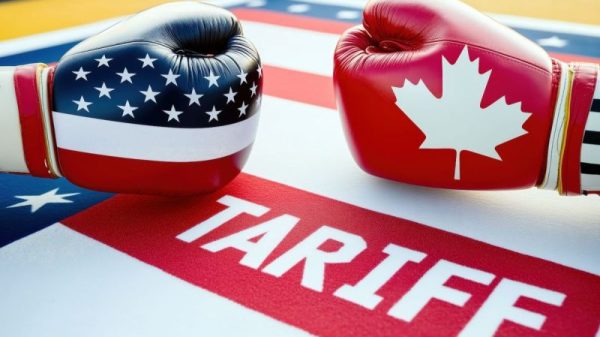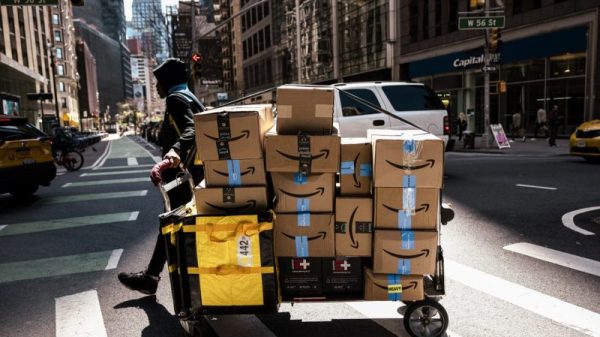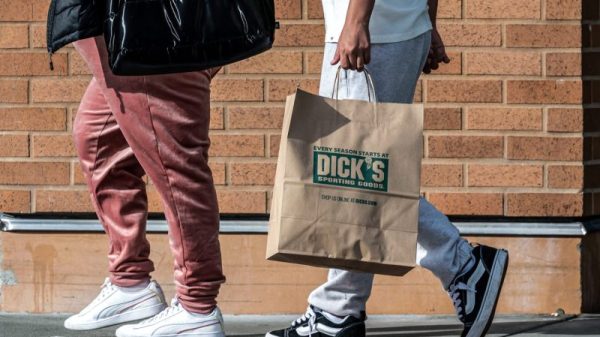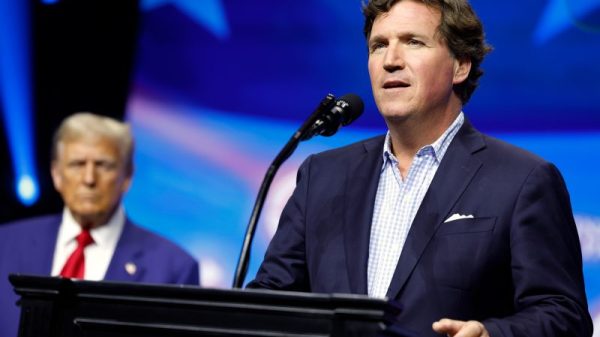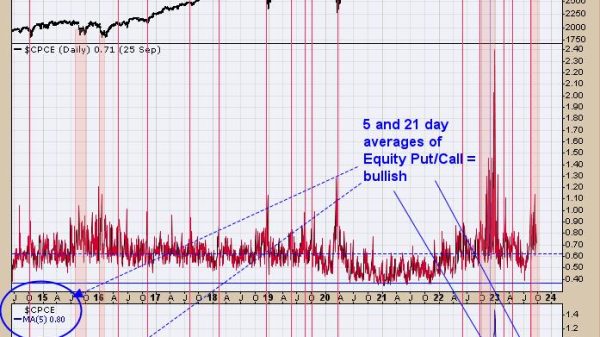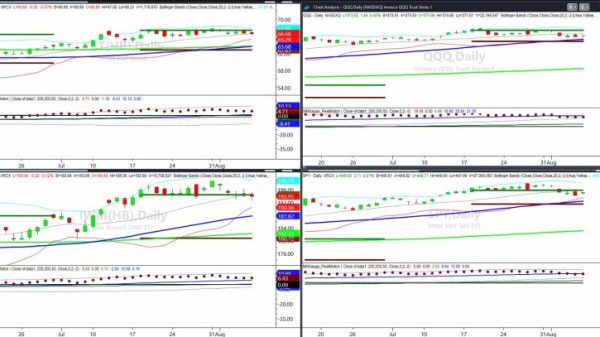Five states are deciding this year whether to ditch the practice of paying workers who earn tips less than the minimum wage. And activists say they’re bringing that fight to at least as many others, framing it as a key cost-of-living issue in an election year.
Ballot measures pending in Michigan, Arizona, Ohio and Massachusetts, and a bill being reintroduced in Connecticut would eliminate a longstanding two-tiered pay system for tip-earning hourly workers like restaurant servers and bartenders, who earn a lower “subminimum” wage than their nontipped counterparts.
Only seven states already pay a single minimum wage regardless of tips. While more than two dozen others have raised subminimum pay for tip earners above the federal $2.13-an-hour floor — a rate last increased in 1991 — those workers still earn less in base pay than their states’ minimum wage.
Employers are required to make up the difference whenever tips don’t add up to the federal minimum of $7.25 an hour, but labor advocates and researchers say that rarely happens consistently.
One of the next big battlegrounds is New York, where a $15 hourly minimum wage took effect Jan. 1 — except for tip earners. Activists and progressive lawmakers are already pushing to end that exemption and calling on Democratic Gov. Kathy Hochul to back a single pay floor as part of her 2024 budget plan.
Proponents feel the wind in their sails after Chicago lawmakers voted in October to begin phasing out the tipped subminimum wage over five years until it’s even with the city’s standard hourly minimum of $15.80. Less than a year earlier, Washington, D.C., took a similar step through a ballot measure voters backed by wide margins.
“We’re just seeing so much momentum following that win” in the Windy City, said Saru Jayaraman, the president of One Fair Wage, a national advocacy group that led the effort there. She said the organization has already seen thousands of restaurants across the country voluntarily abandon subminimum wages in favor of the same base pay for all front- and back-of-house workers, with tips on top.
In addition to New York and Connecticut, Jayaraman said One Fair Wage is campaigning behind legislation to end subminimum pay in Illinois, Maryland, Hawaii and Rhode Island in 2024. Altogether, the group says it’s tallied 13 states taking up similar policy changes through various means this year.
“It’s about a massive shift that’s happened in the restaurant industry post-pandemic,” said Jayaraman, who also directs the Food Labor Research Center at the University of California, Berkeley.
As the economy reopened and employers struggled to hire — while inflation juiced the costs of everything from a head of lettuce to a month’s rent — tips increasingly failed to keep subminimum wage earners afloat, Jayaraman said. She estimated that by the time the Chicago ordinance came up for a vote, about a third of the city’s labor-hungry restaurateurs had already hiked by so much that the measure was virtually a moot point for them.
Tipping volumes rose modestly as the country emerged from the pandemic, but Americans groaned about it even when they went along and added gratuity in more places more often. Recently, though, frustrations over tipping etiquette — scrambled by the ubiquity of automated prompts from digital card readers — have calcified into fatigue.
“We’ve definitely observed a slight increase in tipping over the last few years,” the payments processor Square told NBC News in November, but the upticks were “a lot more modest than people realize.”
For many workers, that has translated into lower take-home pay. Some bartenders and servers told CNBC’s Emily Lorsch that they’re now making as much as 30% less than what they earned in previous years, citing a backlash to so-called tipflation.
Opponents of eliminating subminimum pay for tipped employees, including restaurant industry groups, say the practice is crucial for smaller establishments operating on razor-thin margins. Otherwise, many businesses say they’d have to pass higher labor costs on to consumers in the form of steeper menu prices or those vague service charges creeping onto patrons’ checks. Some also argue there’s no better way to incentivize good service than with the prospect of a fat tip.
Forcing these workers to rely exclusively on tips just isn’t working anymore.
Saru Jayaraman, president of one fair wage
Sylvia Allegretto, a senior economist at the left-leaning Center for Economic and Policy Research think tank, said concerns about the health of the restaurant industry have been wielded to depress wages for decades.
“Why are there restaurants in California if we have a $16 minimum wage and no subminimum wage?” said Allegretto, a former co-chair of UC Berkeley’s Institute for Research on Labor and Employment.
Jayaraman acknowledged concerns about competition, saying, “It has to be everybody across the board,” not just deeper-pocketed businesses with more ability to raise pay. But she said the compensation patchwork is already driving up labor costs by prolonging a hiring crunch and high turnover, adding, “A lot of workers are saying, ‘I won’t come back until it’s the law.’”
Beyond just eliminating subminimum pay for potentially millions more tipped workers in 2024 — an election year in which Jayaraman said a “top issue for every poll I’ve seen is the cost of living” — One Fair Wage also wants to secure higher pay floors overall.
The ballot measures the group is backing in Michigan, Arizona and Ohio, along with one in California that would end subminimum pay for incarcerated people — the only residents there who can still be compensated that way — would also raise the overall state minimum wage across the board, she said.
“Forcing these workers to rely exclusively on tips just isn’t working anymore,” she added.
The next 12 months will show how many voters and policymakers agree.

